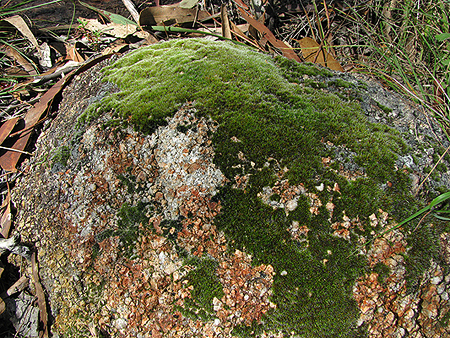(Chemical and Physical)
Water, wind, sun and ice may have been the main sculptors of the granite slabs, but plants also play an important role.
Algae, bacteria, lichens and mosses living on the rock surface produce weak acids which convert some of the minerals to clay. As algae grows, it also physically penetrates between and within the rock's crystals, weakening the stone. In humid areas, lichens can actually protect the granite they grow upon by reducing the amount of moisture reaching the rock surface, but in dry areas they significantly contribute to its weathering.
Plant roots penetrate and widen existing cracks in the rocks in their search for water and nutrients. Dead plant material forms a humus which retains moisture and creates organic acids that weather the stone.
More Photos...
Next...
Erosion
|

Moss growing on a stone. The surface of the granite
is freely disintegrating in some places.
|

